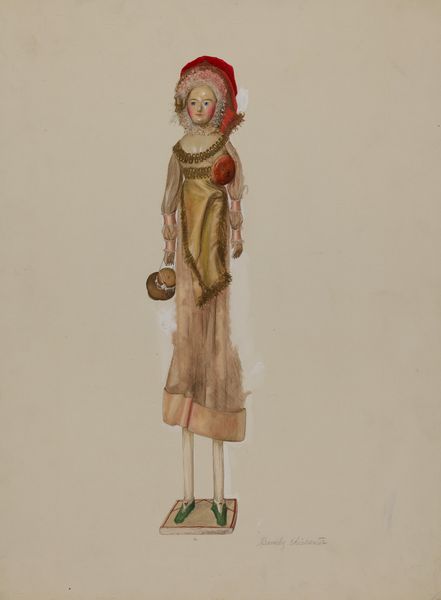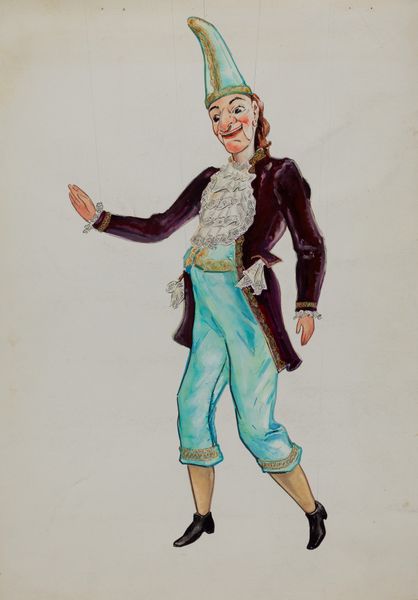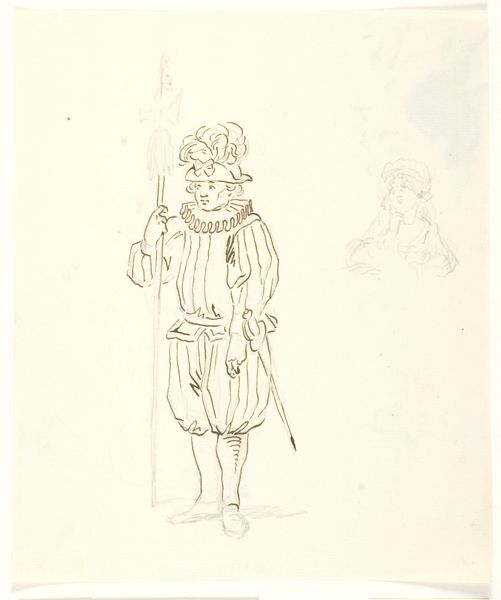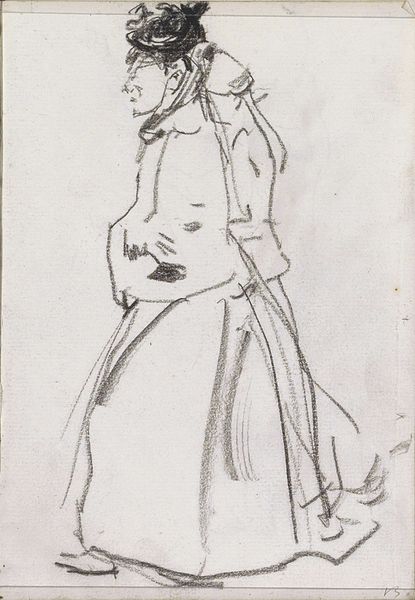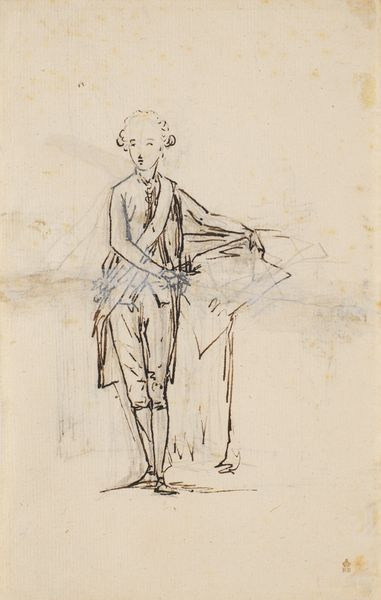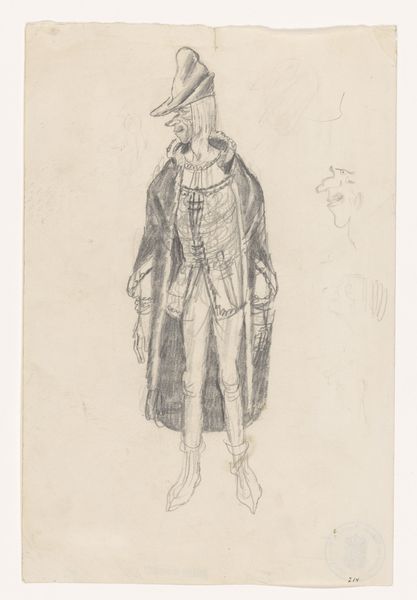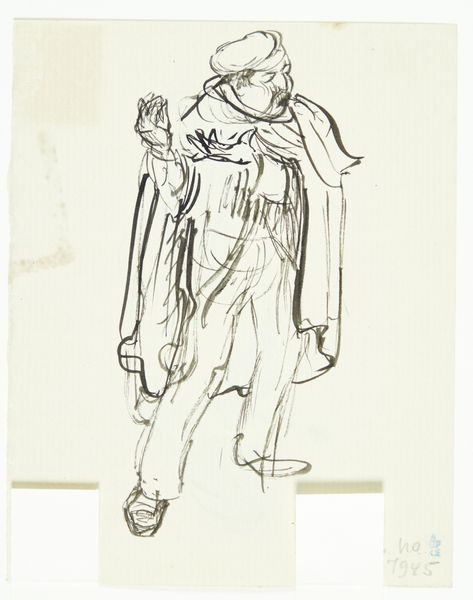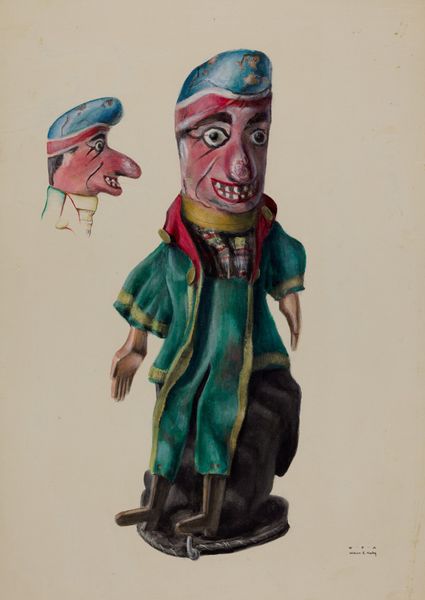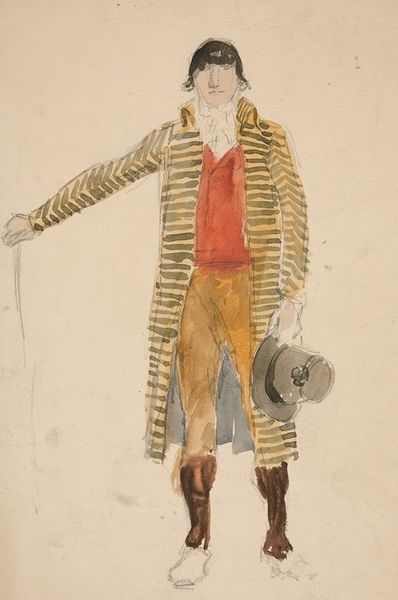
drawing, watercolor
#
portrait
#
drawing
#
caricature
#
caricature
#
watercolor
Dimensions: overall: 50.9 x 38.3 cm (20 1/16 x 15 1/16 in.) Original IAD Object: 20 3/4" high
Copyright: National Gallery of Art: CC0 1.0
Curator: This artwork is a watercolor and drawing entitled "The Doctor" Marionette, made around 1937 by Ruth Abrams. It immediately strikes me as theatrical, almost unsettlingly cheerful. Editor: Unsettling is the word! The high color in the cheeks, that fixed grin… The caricature is very deliberately constructed, of course. Let's talk about that. You can almost feel the texture of the paper, the deliberate layering of the watercolor washes… it makes you think about the labor and intent behind creating an artificial figure of authority, right? Curator: Absolutely. Caricatures were a tool of political commentary throughout the early 20th century. The "doctor" figure—often a stand-in for the establishment—became a stock character representing either care or, more often, exploitation, and the puppetry aspect makes it particularly poignant given the historical context of that era and particularly of power relations during the Great Depression in the United States. The colors used – reds and purples – add to this sense of unease; nothing about this piece feels passive. Editor: I'm glad you brought up that term exploitation, which is what this really reminds me of. The rendering does suggest a deliberate critique of professionalism as labor… Curator: Which is ironic when one considers that watercoloring demands such control, and precise handwork! Every careful brushstroke amplifies the underlying social commentary. Editor: The figure is clearly not what it seems—the exaggerated features reveal the constructed nature of authority. Is this intended to inspire empathy, I wonder? The marionette itself also speaks to the theme of manipulation... Perhaps highlighting the public's relationship with these powerful roles, particularly, let's say in the world of public health. Curator: Precisely. Looking closer at how the lines of the artwork are composed – like, for example, the puppet's open gesture, with one hand raised as if in performance – further points us back towards that underlying theme of control...of social influence... Editor: Indeed, and thinking about how that ties into Abrams' artistic practice, we can explore the use of readily available and very tactile materials during this time. It is accessible artwork meant for the people… Curator: What do you make of this lasting legacy and power from the simple gesture? Editor: It serves as a pointed reminder of the many socio-economic elements influencing healthcare practices...and their consequences in those formative historical contexts. Thank you, this was enlightening!
Comments
No comments
Be the first to comment and join the conversation on the ultimate creative platform.
